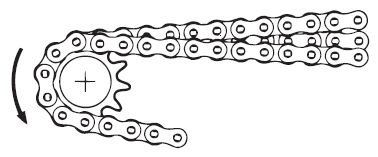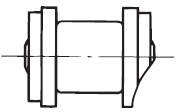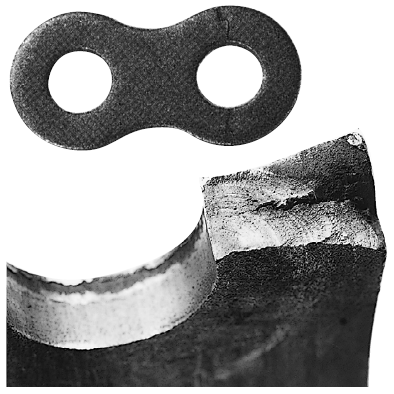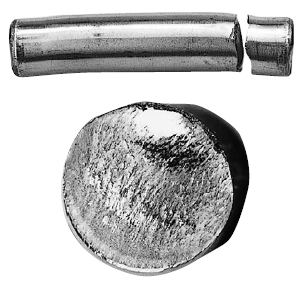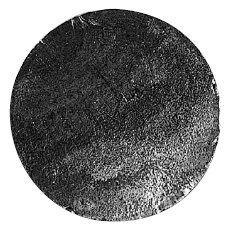Troubleshooting Roller Chain Drive Troubleshooting
General
Plate related
Pin related
| 14 | Breakage of pin |
|---|---|
| 15 | Pin rotates or begins to protrude |
| 16 | Wear or rust occurs on the connecting pin only in a lifting application or similar operation |
Bush/roller related
| 17 | Roller and/or bush cracks (falls off) |
|---|---|
| 18 | Roller does not rotate |
| 19 | Roller is opening up |
| 20 | Roller is becoming hourglass shaped |

General
| 1 |
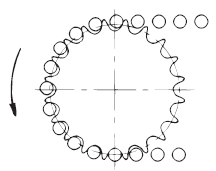 [Click to enlarge ] |
Chain is riding up on the sprocket |
|---|
| Cause 1 | Roller chain and sprocket do not match | Solution | Replace the roller chain or sprocket with one that is the correct size. |
|---|---|---|---|
| Cause 2 | Excessive load | Solution | Reduce the load (lubricating to the driven machine is also effective). Or increase the number of or size of chains. |
| Cause 3 | Elongation of the chain due to wear or excessively worn sprocket teeth | Solution | Replace with new chain or sprocket |
| 2 | Unusual noises |
|---|
| Cause 1 | Improper installation of the sprocket or shaft | Solution | Inspect and correct |
|---|---|---|---|
| Cause 2 | Chain casing or bearings are loose | Solution | Tighten all nuts and bolts |
| Cause 3 | Excessive or insufficient slack in the chain | Solution | Adjust the distance between shafts to obtain the proper amount of slack |
| Cause 4 | Excessively worn chain or sprocket | Solution | Replace the chain and sprocket with new ones |
| Cause 5 | Lack of or unsuitable lubrication | Solution | Provide proper lubrication according to the operating conditions |
| 3 | Excessive vibrations in chain |
|---|
| Cause 1 |
Chain is resonating with periodic external force |
Solution |
Change the chain's mode of vibration 1. Preventing resonance a. Change the natural frequency of the chain ○Alter the effective tension either by applying an initial tension or adjusting the existing one ○Install a tensioner to change the chain span ○Replace the chain. Choose a different mass and spring coefficient b. Change the vibration frequency ○Change the sprocket rotational speed ○Re-evaluate the device set-up 2. Mechanically reducing the vibrations ○Install a guide stopper ○Install a self-adjusting tensioner on the slack side. |
|---|---|---|---|
| Cause 2 | Load fluctuations are excessively large | Solution | Reduce fluctuations with a fluid coupling, etc. |
| 4 |
 [Click to enlarge ] |
Chain winds up on the sprocket (poor separation from the sprocket teeth) |
|---|
| Cause 1 | Span between shafts is too large | Solution | Install an idler |
|---|---|---|---|
| Cause 2 | Excessive slack in the chain | Solution | Adjust the chain length or distance between shafts Install a tensioner |
| Cause 3 | Elongation of the chain due to chain wear or excessively worn sprocket teeth | Solution | Replace with new chain or sprocket |
| 5 | Rusting of the chain |
|---|
| Cause 1 | Improper lubrication or poor environment | Solution | Replace chain and protect it from the environment with a chain casing or proper lubrication |
|---|
| 6 | Excessive wear on the inside surface of the links plates and sides of the sprocket teeth |
|---|
| Cause 1 |
Improper installation |
Solution | Correct sprocket and shaft installation |
|---|
| 7 | Excessive wear on the link plate side surfaces and pin heads |
|---|
| Cause 1 |
Improper installation of guides, etc. |
Solution | Check the condition of the guides, and increase the gap between the guides and the chain. |
|---|
| 8 |
 [Click to enlarge ] |
Improper flex or bending of chain, tight joints |
|---|
| Cause 1 | Deformation of chain due to inproper installation | Solution | Inspect the installation and correct as necessary |
|---|---|---|---|
| Cause 2 | Contamination from wear dust or dirt due to improper lubrication (grease, etc.) | Solution | Remove the chain, clean it thoroughly, and provide proper lubrication |
| Cause 3 | Excessive load, bent pin, bush cracking | Solution | Reduce the load or increase the number of or size of chains. |
| Cause 4 | Corrosion or rusting | Solution | Install a chain casing to protect the chain |
| Cause 5 | Seizing from improper lubrication | Solution | Provide proper lubrication according to the operating conditions |
| Cause 6 |
Seizing of pin and bush Pin and bush seize from high-speed operation, causing poor articulation and possibly leading to chain breakage |
Solution | Provide the proper operating conditions |
| 9 | Spreading of link plates |
|---|
| Cause 1 |
Uneven or excessive loading caused by improper installation |
Solution | Replace with new chain and correct installation |
|---|
Plate related
| Cause 1 | Excessively large shock load | Solution | Reduce shock loads by making the start-up, stopping, and other actions smoother (by installing a shock absorber, etc.). Increase the size or number of chains. |
|---|---|---|---|
| Cause 2 | Vibration in the chain | Solution | Install an anti-vibration device (for example, a tensioner or idler sprocket). Refer to the section on "Excessive vibration in chain." |
| Cause 3 | Large inertia in the driven machine (excessive load) | Solution | Reselect chain, or alternatively increase the size or number of chains. |
| Cause 4 | Corrosion | Solution | Replace with a new chain. Install a casing to protect the chain. Periodically clean and lubricate the chain. |
| 11 | Cracks form in the link plate (fatigue) that are perpendicular to the direction of pull |
|---|
| Cause 1 | Loads are greater than the maximum allowable load | Solution | Remove all large or excessively repeating loads. Increase the size or number of chains. |
|---|
| 12 |
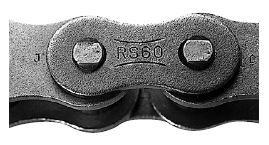 [Click to enlarge ] |
Deformation of link plate holes |
|---|
| Cause 1 | Overload | Solution | Remove the cause of the excessive load and replace with a new chain. |
|---|
| 13 |
 [Click to enlarge ] |
Corrosion stress cracks appear (bow-shaped cracks in the link plate) |
|---|
| Cause 1 | The chain is being used in an acidic or alkaline environment. (This is not caused by a repetitive load.) |
Solution | Replace with a new chain. Install a casing to protect the chain. Consider a chain with a high resistance to corrosion stress cracking. (Contact a Tsubaki representative for more information.) |
|---|
Pin related
| Cause 1 | Excessively large shock load | Solution | Reduce shock loads by making the start-up, stopping, and other actions smoother. |
|---|---|---|---|
| Cause 2 | Pin subjected to a repetitive load greater than its fatigue limit | Solution | Remove the excessively large repetitive load. Increase the size or number of chains. |
| Cause 3 | Corrosion | Solution | Install a casing, and periodically clean and lubricate the chain. |
| 15 |
 [Click to enlarge ] |
Deformation of link plate holes |
|---|
| Cause 1 | Excessive load or improper lubrication | Solution | Replace with new chain. Improve the lubrication or loading conditions. |
|---|---|---|---|
| Cause 2 | Operating a chain at high load without proper lubrication can create friction between the pin and bush, causing the pin to rotate. In this situation, the pin may come out, leading to chain breakage. | Solution | Replace with new chain immediately. Do not weld or reuse the pins. (Dispose of the old chain to be sure that it is not used again by mistake.) Also, if the pin head of link plate surface is worn, check the installation. |
| 16 | Wear or rust occurs on the connecting pin only in a lifting application or similar operation |
|---|
| Cause 1 | Improper initial lubrication during installation | Solution | Replace the connecting link. If pin wear is excessive, replace the chain also. Take special care to properly install the connecting section for devices such as end brackets used for lifting applications, etc. |
|---|
Bush/roller related
| Cause 1 | Excessive load or rotational speed | Solution | Reselect chain according to the kilowatt ratings tables |
|---|---|---|---|
| Cause 2 | Inadequate lubrication | Solution | Replace the chain. Provide adequate lubrication according to the operating conditions |
| 18 | Roller does not rotate |
|---|
| Cause 1 | RS11-SS-1、RS15-1、RS25-1、RS35-1 | Solution | A bushed chain instead of a roller chain is being used |
|---|---|---|---|
| Cause 2 | The inner plate is moving inward, or the bush is cracked | Solution | Replace the chain. Re-inspect the installation and load conditions |
| Cause 3 | Foreign matter has gotten between the bush and roller | Solution | Periodically clean the chain. Install a casing to protect the chain. |
| 19 | Roller is opening up |
|---|
| Cause 1 |
Overload |
Solution | Reduce the load, and provide adequate lubrication |
|---|
| 20 | Roller is becoming hourglass shaped |
|---|
| Cause 1 | Excessive load or inadequate lubrication | Solution | Replace with new chain. Improve the lubrication or loading conditions. |
|---|
